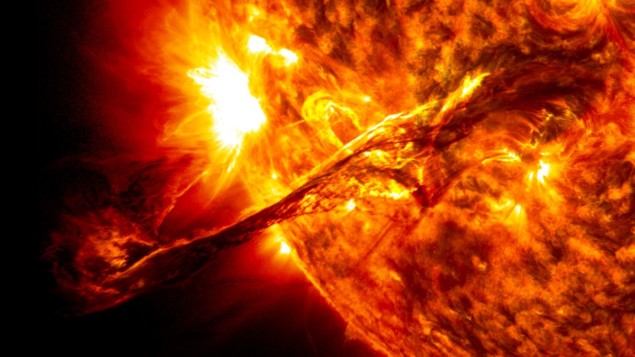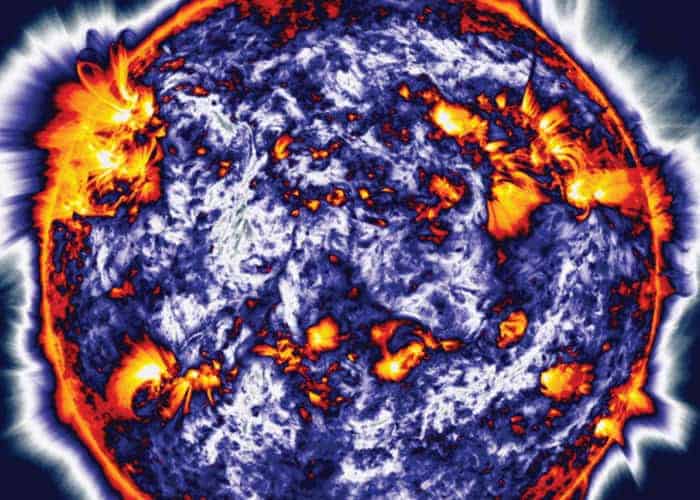
Satellite operators could be doing more harm than good by shutting down their systems whenever a coronal mass ejection (CME) from the Sun is forecast to arrive at Earth, UK researchers have suggested. Mathew Owens, Mike Lockwood and Luke Barnard at the University of Reading show that the speeds and magnetic field intensities of the bursts could be just as important to consider as their arrival times when deciding when to turn satellite systems off. If applied, their ideas could significantly improve the efficiency of many satellite operations.
Originating from the Sun’s dynamic surface, CMEs are high energy bursts of plasma that travel through interplanetary space, accompanied by strong magnetic fields. When they interact with Earth’s atmosphere, they can trigger solar storms that cause severe damage to satellite systems if they are operating at the time. To predict these disruptions, astronomers measure the speed at which CMEs travel through space to make accurate forecasts of when they will arrive at Earth.
Currently, many satellite operators adopt a “better safe than sorry” approach when responding to these forecasts. Whenever a CME is predicted to arrive, they will completely shut down their systems to avoid any damage. However, the Reading trio argue that these current early warning systems do not account for a simple yet crucial fact: while all solar storms are triggered by CMEs, not all CMEs cause in damaging events.
Many false alarms
The researchers believe that this oversight is now causing many false alarms, forcing satellites to shut down when they can be operated safely. Furthermore, the cost of unneeded shutdowns could be even greater than the cost associated with solar storm damage. To improve the response to CMEs, the team suggest that alongside arrival times, it is just as important for CME forecasts to incorporate information about their speeds, and the intensities of their accompanying magnetic fields – both key indicators of solar storm severity.

What if a solar super-storm hit?
Owens and colleagues tested this principle through a simple analysis of solar wind data, in which they calculated the costs of shutting down satellite systems only when CME speed and magnetic field measurements indicated that damaging weather was about to occur. Compared with more frequent shutdowns which only considered CME arrival times, they found that the resulting costs were significantly reduced.
By quantifying the costs of false alarms in this way, the team’s findings could inform more sophisticated approaches to mitigating the damage of solar storms in the future. If adopted more widely, their approach could help to streamline the efficiency of satellite operations; significantly reducing costs incurred by the many groups which rely on them.
The research is described in Space Weather.



